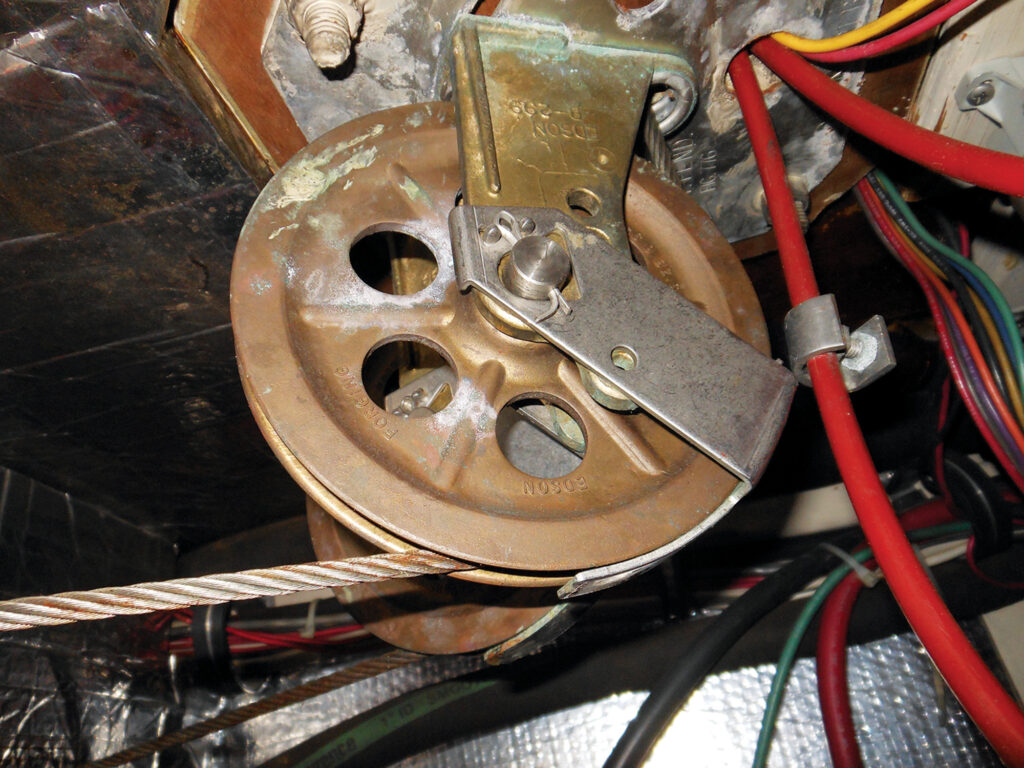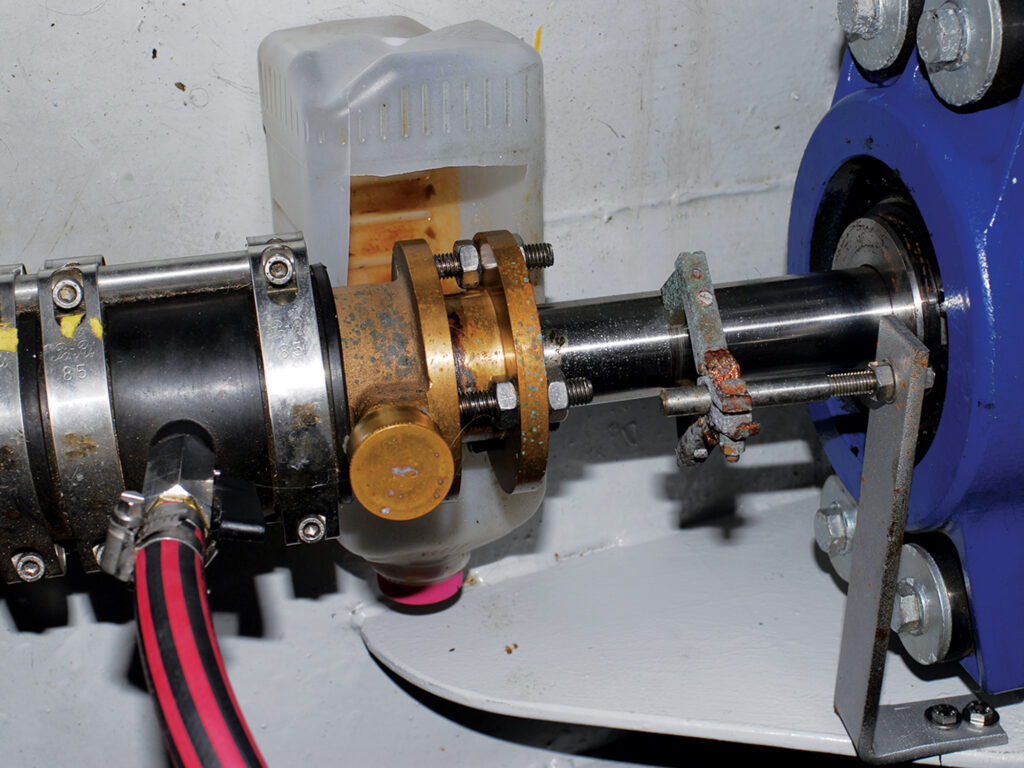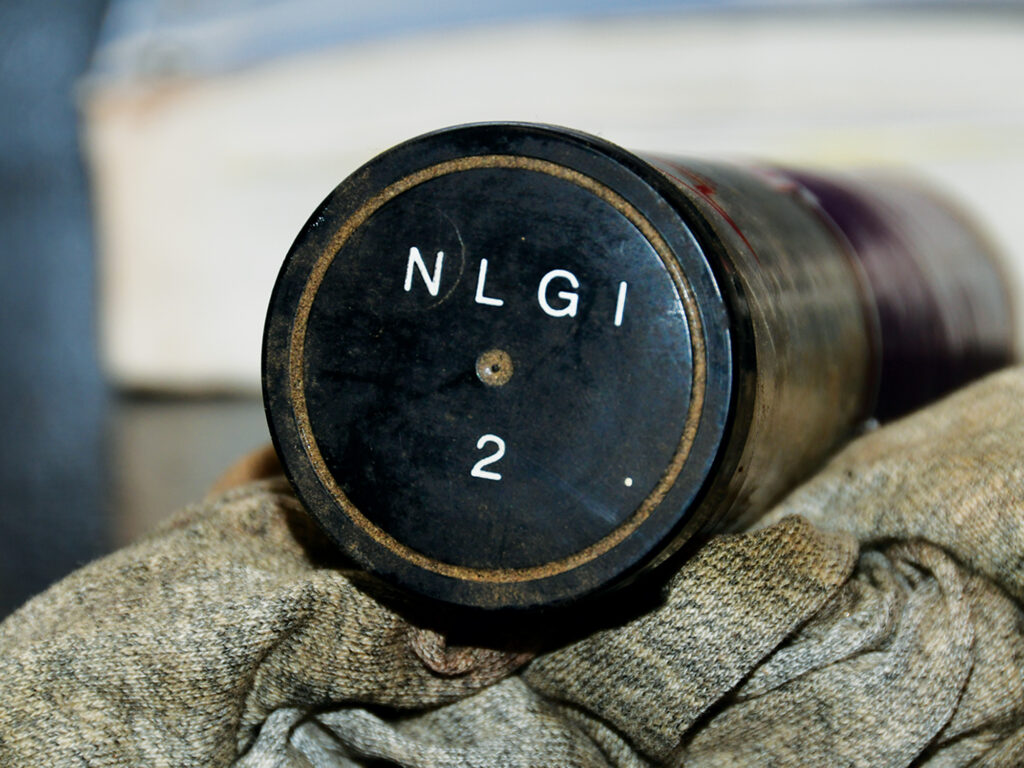
Surveying the lubricants shelf in my shop, I see no fewer than 13 types of grease, each designed for specific requirements or needs.
A cruising vessel doesn’t need such an array, but it is important to use the right grease for the task at hand. Selecting incorrectly, or applying too infrequently, can lead to premature wear and failure.
Grease is nothing more than lubricating mineral or vegetable-based oil that’s held in suspension with a medium more viscous than the oil itself.
In the lubrication world, that medium is referred to as a “soap.” Soaps can take on many forms, but the most common are lithium-, aluminum- and calcium-based soaps. What’s most important is their incompatibility. Ideally, grease types should not be mixed without first consulting a grease compatibility chart.
The two most common types of grease are designed for use in automobile chassis. They are often called “multipurpose” and usually are calcium-based, intended for low heat and wet applications. They also can be silicone-based, designed to operate in high-temperature (up to about 275 degrees Fahrenheit) applications. These heavy-duty greases are typically rated by the National Lubrication Grease Institute as No. 2, which has the consistency of peanut butter.

Other types of grease are used in electrical applications and called dielectrics. They are insulators that do not conduct electricity. They are often used to seal and prevent corrosion, and on spark-plug boots to keep out water, and prevent sticking to spark plugs. These greases are often silicone- or Teflon-based and are translucent.
Anti-seize grease is used to prevent seizure of fasteners, particularly in corrosion-prone scenarios. It’s often aluminum- or copper-based. These greases should be used with caution because they can cause fasteners to loosen at undesired times. Never use anti-seize grease on motor mounts or shaft coupling fasteners.
Application
Grease applications aboard a cruising vessel include windlass gears, shafts, clutches, steering cables, sheaves, gears, chains, winches, furler components, thrust bearings, and some stuffing boxes and seacocks.
Much like oil, grease needs to be changed and becomes contaminated with dirt, dust, metal and water. Rather than simply adding new grease to some components, the old grease should be removed and the surfaces cleaned first. This is especially true in bearing applications such as winches and windlasses, which are subject to contamination.
Doing a thorough job of this cleaning requires disassembly, after which as much of the old grease as possible should be removed with a rag. The parts should be washed in a parts washer or, if that’s not available, in solvent such as mineral spirits or diesel fuel.
Grease can be applied using proprietary nozzles called Zerk fittings. They let grease pump into a component using a grease gun. Because these fittings include a check valve of sorts, the grease can’t leak out. Some seacocks are designed to have Zerk fittings installed so that their balls can be lubricated while displacing water from the void between the outside of the ball and the inside of the seacock housing.
Grease used in seacock applications that are greaseable (many are not) should be highly viscous, NLGI No. 2 and water-resistant. Grease designed for boat-trailer wheel bearings works well in this application.

For high-speed bearings served by Zerk fittings—this especially applies to drivetrain thrust bearings—avoid overfilling the grease cavity because the grease can inhibit heat dissipation. Zerk fittings used on seacocks, if left in place, should be stainless or Monel. Grease can also be applied from reservoirs called “cups,” whose caps turn to force grease into an area where it’s needed.
Where grease is concerned, be sure to follow manufacturer recommendations for selection and application, as well as for replacement intervals.
Steve D’Antonio offers services for boat owners and buyers through Steve D’Antonio Marine Consulting.








